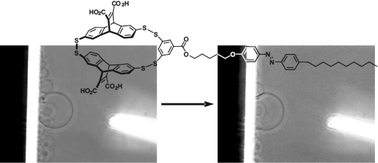Photo-induced molecular-recognition-mediated adhesion of giant vesicles†
Abstract
Few methods currently exist for controlling vesicle–vesicle adhesion. We now report a new system, based upon a multivalent guest and an amphiphilic receptor with a photo-isomerisable anchor that can be incorporated into


 Please wait while we load your content...
Please wait while we load your content...